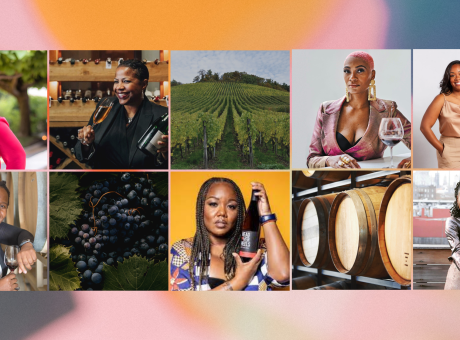Grape to Glass: Fermentation
Fermentation is the process in winemaking where sugar converts to alcohol. This is where we turn grape juice into an alcoholic beverage. Back in the 1800’s, Louis Pasteur noticed that there was a connection between yeast and fermentation. He recognized the process where the yeast acts as the catalyst through reactions that convert sugar into alcohol.
During fermentation, winemakers have to consider several factors, including sugar content, yeasts, temperature and cleanliness. Sometimes fermentation is done in stainless steel tanks, sometimes it happens inside a wine barrel, sometimes in large wooden vats. In sparkling wines, fermentation even happens in the bottle itself.
During this part of the process, yeasts take the sugars present in the grape juice and turn it into ethanol and carbon dioxide. A key job of a winemaker is to work with a yeast that lives long enough to convert all the sugars into alcohol and CO2. Leftover sugar leads to wines that are too sweet – not balanced.

Yeasts
Some winemakers use a yeast starter to kick off fermentation. Yeasts are tiny organisms that reproduce through cell division. Winemakers have nearly 2,000 species of yeast to choose from for fermentation. Most winemakers use the yeast called Saccharomyces Cerevisiae. There are hundreds of other yeasts that can turn grape juice into wine, but can be trickier to use to avoid off flavors.
Yeast stops its work during one of two moments – either after all of the sugar in the must has been converted or when the alcohol content reaches 15% alcohol. Fifteen percent is a concentration strong enough to stop the activity of almost all yeasts.
Temperature
The temperature of the yeast starter and the must is vital to the success of the wine. Winemakers need to control the heat that’s generated during fermentation. Depending on the kind of wine, fermentation occurs within different temperature ranges. Lower temperatures mean that fermentation happens more slowly. Higher temperatures can mean a fast fermentation. This can result in killing off your yeasts too early or a “cooked” flavor.
Warmer fermentations are usually used for red wines for increased color and tannin. Temperature is key to making sure the chemical processes go ahead as planned. White wines should be fermented between 64 and 68 degrees F. Red wines can be fermented up to a balmy 85 degrees F. Sometimes, controlling this temperature means that winemakers have to cool their vats. They do this by using built-in cooling systems in their fermentation tanks or like back in France, surrounding the vats with ice.
Cleanliness
More than at any other time of winemaking, cleanliness is key during fermentation. Containers and tools need to be sterile during this process. Any additional bacteria can completely derail the fermentation process.
Punch Downs and Pump Overs
After the yeast is added, carbon dioxide is released during fermentation. For red wine, this means the skins float up to the surface. Winemaker call this “punch down” or “pump over” to keep the skins soaking in the juice. All the skins and juice is pressed after fermentation is complete. Then it’s racked and aged in barrels.
Depending on how strong the force, pump overs extract the tannins in a wine. Some agitate the wines aggressively and some are gentle sprinklers. In larger vats, pump overs also add oxygen to the mix.
Punch downs are a much gentler way to stir in the skins. Punch downs keep the grape skins from pulling out too many tannins. The small amount of oxygen that’s added to the fermentation slows the process.
Fermentation stops when the yeast has either consumed all of the sugar in the must, or the alcohol level has gotten too high for the yeast to survive (that magical 15%). This is one reason that it’s important to know the sugar level of the grapes before fermentation. You know what percentage of alcohol you should be aiming for when you know how much sugar you have.
Need to catch up on our past Grape to Glass installments? Find them on our blog here:
Grape to Glass: Flowering and Fruit Set
Grape to Glass: Harvest & Crush





Leave A Comment